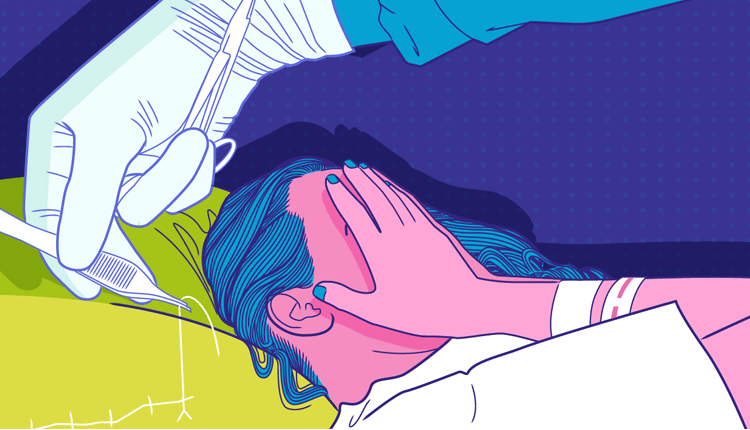Vice supposedly done to tighten vagina after childbirth, is rumoured result of handshake deals between husbands, doctors
By Sandra Wekesa, October 13, 2021“Let’s add in another stitch to make sure this is nice and tight,” is a statement mothers are likely to hear during childbirth, especially after an episiotomy or a tear.
This extra stitch is known as the husband stitch, ‘daddy stitch’ or ‘husband knot.’
It was coined by Sheila Kitzinger in her 1994 book, The Year After Child Birth Surviving and Enjoying the First Year of Motherhood, describing a procedure taken to preserve the size and shape of the vagina either to enhance a man’s pleasure in intercourse or increase the frequency of female orgasm.
Angela Cherotich says she doesn’t understand why someone would go through an extra mile to make you experience that amount of pain especially after giving birth.
The mother-of-one says although she has heard of such cases, she doesn’t understand why someone would be comfortable telling their doctor to do that behind their partners’ back.
“There are so many ways of getting your groove back and a husband stitch isn’t one of the options.
Women should be enlightened about this procedure and informed about reporting when they feel some type of way,” she says.
Although this and so much more has been discussed in life history, medics confirm it actually happens in the theatres.
Anthony Khaemba, a gynaecologist, says during childbirth, it is not uncommon for women to undergo tearing or episiotomy to aid in infant removal.
“A husband stitch is an extra stitch given during the repair process after a vaginal birth supposedly to tighten the vagina for increased pleasure for the husband,” he says.
He adds that although it is not an accepted medical or ethical procedure, some patients and their families often ask for it.
In addition to lacking any scientific backing to support a medical need for the extra stitch, the unnecessary stitch can also result in painful and lasting consequences for the women.
“Medically there is no such thing as putting an extra stitch to tighten the vagina.
The vagina is an elastic hollow organ that stretches and expands immensely to accommodate a human baby,” he says.
He adds that the vagina is a muscle and can be repaired by pelvic floor exercises.
“The goal of a vaginal repair after birth is not to tighten the vagina, but to align the tissues back together to allow healthy healing.
According to Geoffrey Wango, a psychologist at the University of Nairobi says this extra stitch tends to cause women pain and is a violation of their rights, because many at times the mother doesn’t consent.
Psychological torture
“This is done behind her back and since they don’t pay much attention to what’s happening to their vulva they find themselves in such situations later,” he says.
Women undergo extreme discomfort and pain during sex, which makes them even more fearful of it.
“The physical and emotional consequences tend to be heavy on the mother and many at times it leads to broken marriages as opposed to healthy and great marriages. Therefore, it is totally a taboo to do this,” he says.
Other experts say the process puts the sexual pleasure of the male partner over the general well-being of the woman.
It also takes the woman’s control over their body, which contributes to fear of labour, child birth and post-natal activities.
The procedure, women rights experts say, is also an objectification of women, who are only seen as sexual objects by their husbands and medical doctors and not human beings deserving of wellness and health.
Suitable option
Vicky Choi, physiotherapist and women health therapist, says a husband stitch is unnecessary, especially when you consider the many extraordinary tasks the pelvic floor plays a role in, including child birth, sex, bowel movements, urination, continence, sitting, walking, it’s difficult to understand why it’s such an under recognised part of our human body.
Although the pelvic floor is hidden from view, it can be consciously controlled and therefore trained, much like our arm, leg or abdominal muscles.
“These exercises help with the pelvic floor muscles and be an option in repairing the pelvic lining as well, as opposed to thinking of a husband stitch,” she says.
She adds that just because you’ve had a baby doesn’t mean pelvic floor muscle exercises won’t help.
“Postnatal pelvic floor muscle exercises have been shown to assist in the recovery of the muscle function and to reduce or cure the likelihood of urinary incontinence in women who have had instrumental births or big babies,” she says.
